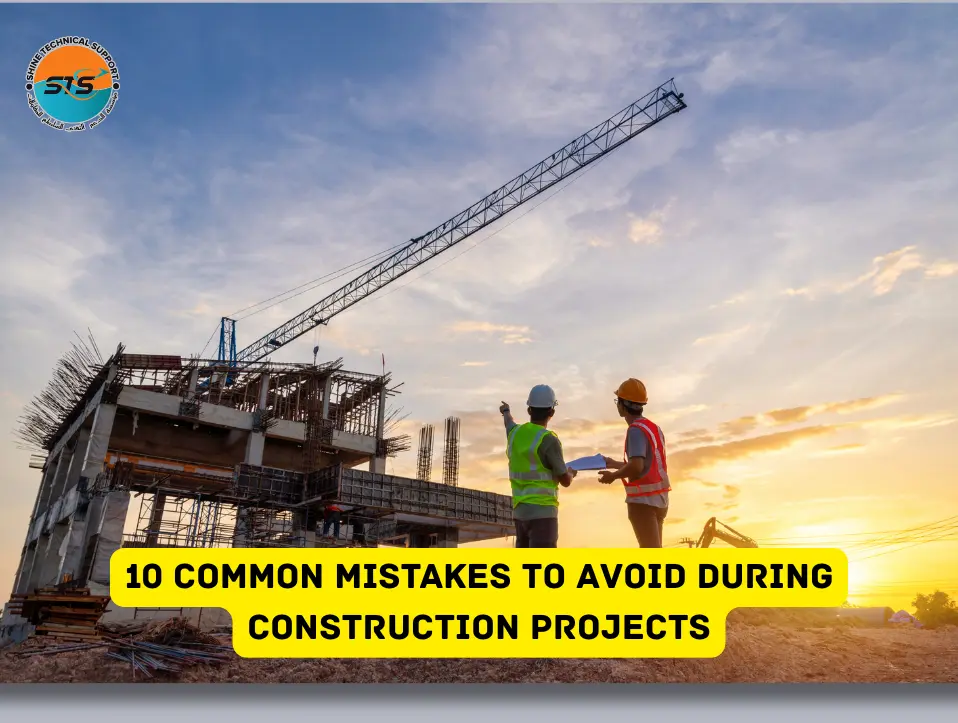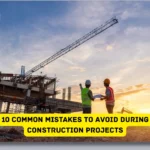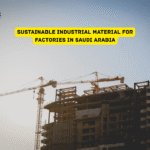Construction projects, whether residential, commercial, industrial, or infrastructure-based require a high degree of planning, coordination, budgeting, supervision, and execution.
Even a minor mistake can lead to cost overruns, project delays, disputes, safety hazards, compliance violations, and material wastage. Many contractors, project managers, and clients underestimate how essential it is to follow a flawless workflow.
The difference between a successful project and a failed one usually lies in the ability to avoid the common mistakes that repeatedly occur across construction sites.
Whether you are a contractor, consultant, material supplier, architect, client, or site supervisor, these insights are valuable for improving outcomes and achieving safe, cost-efficient, durable, and high-quality construction results.
1️⃣ Inadequate Project Planning and Scope Definition
One of the most damaging mistakes in construction is poor or incomplete planning. Many stakeholders rush into construction without a fully documented scope, design, timeline, work plan, or procurement strategy. When planning is insufficient, the project begins with weak clarity and later becomes vulnerable to redesign, rework, additional costs, timeline extensions, and onsite conflicts.
Why This Mistake Happens
- Pressure to start early and deliver quickly
- No detailed feasibility study
- Lack of expert consultation
- Incomplete engineering drawings and BOQs
- Poor documentation and communication
How to Prevent It
✔ Conduct a complete feasibility, cost, and risk analysis
✔ Prepare detailed architectural, structural, and MEP plans
✔ Define the scope clearly with measurable deliverables
✔ Use project management tools (MS Project, Primavera, ERP)
✔ Finalize all approvals before execution
Proper planning is not wasted time it saves months of delays, thousands of dollars, and prevents unexpected redesigns.
2️⃣ Hiring Unqualified or Inexperienced Contractors
Choosing the lowest bidder is a common practice that often results in poor workmanship, weak material standards, and safety violations. A qualified contractor is not chosen based on price only but on portfolio, certifications, technical skills, and reputation.
Warning Signs of Wrong Contractor Selection
- Unrealistically low price comparison
- No certified engineers or licensed professionals
- No previous similar project experience
- No quality standards or safety protocols
Correct Approach
✔ Evaluate credentials and previous completed projects
✔ Ask for safety records, methodology, and supervision plan
✔ Compare technical proposals — not just prices
✔ Sign a legally binding contract with penalties
Remember, cheap construction becomes expensive maintenance.
3️⃣ Using Poor-Quality or Wrong Construction Materials
Material selection directly affects strength, durability, safety, thermal performance, and lifespan of any structure. Unfortunately, many projects compromise on material quality due to budget pressure or lack of awareness. This leads to cracks, corrosion, leakage, settlement, short lifespan, and early renovation expenses.
Common Material Mistakes
- Buying cheapest available materials
- Mixing incompatible material types
- Ignoring moisture, heat, and corrosion factors
- Lack of testing, certifications, and supplier validation
Solutions
✔ Purchase materials from authorized suppliers only
✔ Request test reports where necessary
✔ Follow architect or consultant’s BOQ exactly
✔ Consider quality + durability + warranty, not price alone
Professionals agree — premium materials reduce lifetime cost and maintenance.
4️⃣ Lack of Communication Between Stakeholders
Construction involves many parties including owners, contractors, consultants, engineers, supervisors, vendors, subcontractors, and authorities. If communication is not coordinated professionally, misunderstandings, delays, and design conflicts become inevitable.
Typical Communication Errors
- Verbal agreements without written proof
- Untracked design modifications
- Missing daily reporting system
- No approved change management process
Best Practices
✔ Hold weekly coordination meetings
✔ Document every change with signatures
✔ Use digital platforms for updates and approvals
✔ Assign a single communication authority
Clear communication is the foundation of controlled construction execution.
5️⃣ Inadequate Safety Management on Site
Construction sites are high-risk environments where falls, electrical shocks, machinery injuries, and structural failures can occur. Neglecting safety not only causes injuries, but also leads to legal penalties, stoppages, and reputation damage.
Common Safety Negligence
- No PPE (Helmets, shoes, gloves, vests)
- Unsafe scaffolding or unguarded machinery
- Lack of first-aid or emergency plan
- Untrained labor working on heights or electrical areas
Safety Solutions
✔ Implement full HSSE compliance
✔ Conduct toolbox talks & training sessions
✔ Supervise all high-risk operations
✔ Maintain a site safety officer
Safety is not an extra cost, it is mandatory insurance for life, assets, and project success.
6️⃣ Unrealistic Deadlines and Budgeting
Many construction projects fail because timelines and budgets are over-optimistic and not aligned with real-world site conditions, weather delays, material availability, labor efficiency, and technical approvals.
Bad Budgeting Practices
- No contingency allocation
- Ignoring inflation and price fluctuations
- Not accounting equipment and testing costs
- Incorrect estimation and BOQs
Preventive Measures
✔ Create timelines based on phased work breakdown
✔ Include 10–15% contingency buffer
✔ Discuss milestone-based payment release
✔ Use professional quantity estimators
Right timeline planning reduces stress, conflicts, and financial pressure.
7️⃣ Ignoring Site Surveys, Soil Testing & Local Environmental Conditions
Every construction project must begin with proper soil investigation, topographic survey, drainage study, seismic risk assessment, and weather analysis. Ignoring these leads to foundation failure, water leakage, soil settlement, and structural instability.
Critical Investigations Required
- Soil bearing capacity (SBC) test
- Water table analysis
- Earthquake zone classification
- Wind load consideration
- Flood, stormwater & drainage study
Solution
✔ Never skip geotechnical testing
✔ Follow code-compliant structural design
✔ Adapt materials to climate and soil condition
Foundation quality determines structural lifespan.
8️⃣ Changing Designs After Construction Begins
Unplanned design changes increase time, cost, labor, rework, conflicts, and material wastage. Modifications should only be made if academically justified, not based on personal preference during construction.
Why This Happens
- Owner gets influenced by new ideas
- Lack of initial visualization tools
- No pre-construction mock-ups
How to Avoid It
✔ Finalize drawings before site mobilization
✔ Use 3D visualization & VR walkthrough
✔ Introduce change control forms
A clear plan prevents stressful redesign cycles.
9️⃣ No Proper Record Keeping & Documentation
Documentation is essential for monitoring contract, payments, warranty, material consumption, quality tests, and inspections.
Documents That Must Be Maintained
- Material delivery receipts
- Inspection reports
- Contractor billing records
- Change orders & approvals
- Daily progress reports
Benefits
✔ Future dispute proof
✔ Transparent cost management
✔ Improved accountability
Construction without documentation = risk + confusion + losses
🔟 Ignoring Post-Construction Maintenance
After handing over the building, maintenance guidelines must be followed for long-term durability. Unfortunately, many owners assume no maintenance is required, causing premature damage and costly repairs.
Recommended Post-Construction Maintenance
- Waterproofing inspection every season
- Electrical load testing
- HVAC servicing
- Foundation & slab monitoring
- Exterior paint and joint sealing
Maintenance ensures your investment lives for decades.
🔚 Final Words
Construction is a major investment that demands expertise, planning, and decision-making. By avoiding these ten mistakes, you can save money, time, resources, and reputation, while building safe, long-lasting, and high-quality infrastructure.
Looking for Reliable, High-Quality Construction Materials?
If you are planning a construction project and need premium-grade, certified, durable, and affordable construction materials, we at STS GCC Shine Technical Support are ready to help.
Why Choose STS GCC Shine Technical Support?
✔ Trusted supplier for industrial & commercial projects
✔ Quality-assured and certified construction materials
✔ Competitive market pricing
✔ Timely delivery & bulk order support
✔ Expert technical assistance
📞 Contact STS GCC Today
Let us supply everything you need, safely, reliably, and professionally. Your project deserves quality, not compromise.







